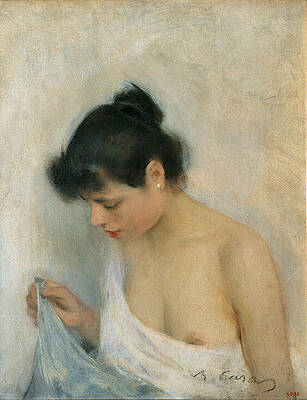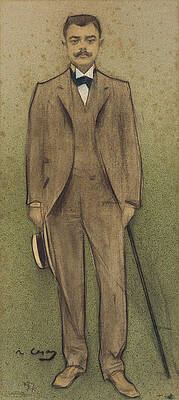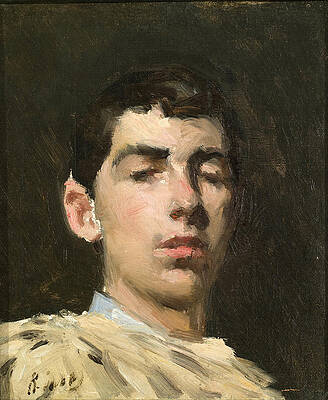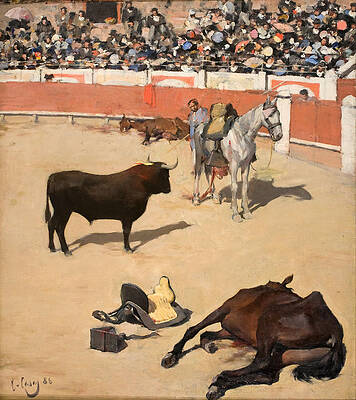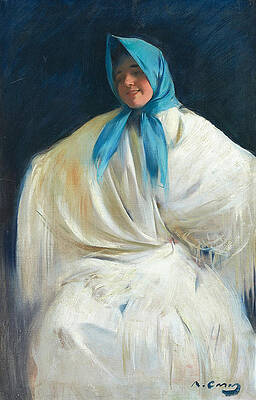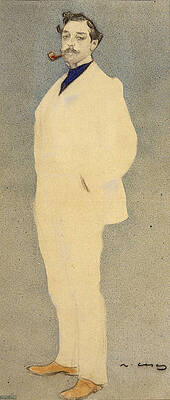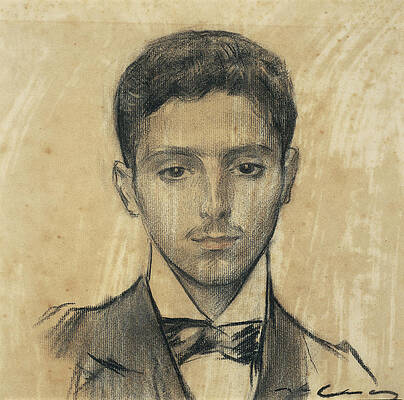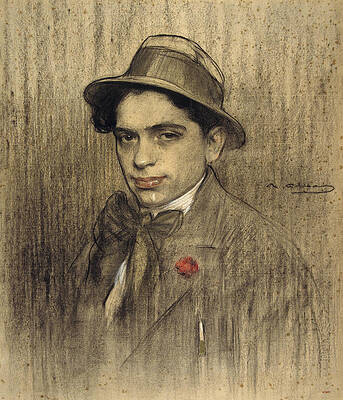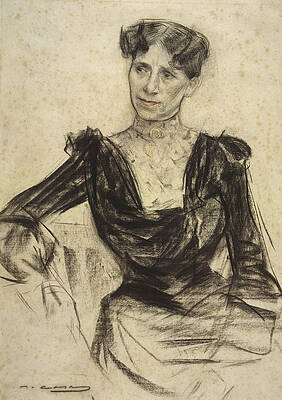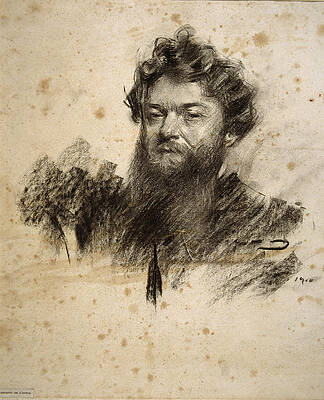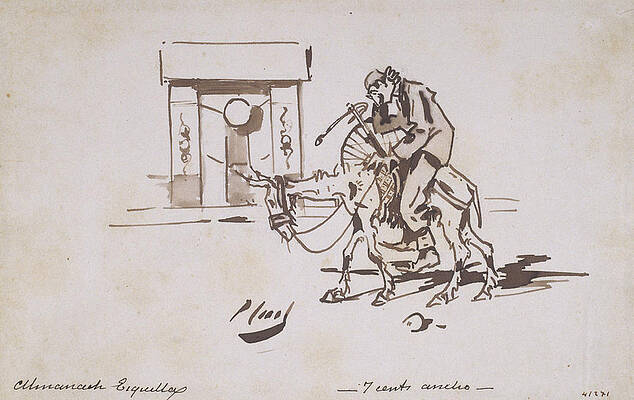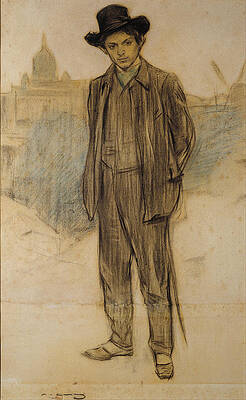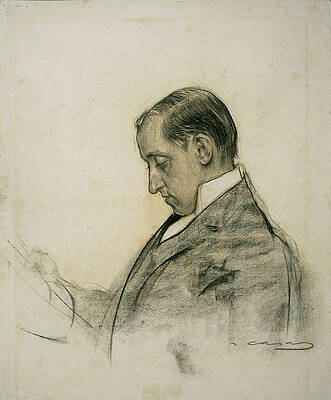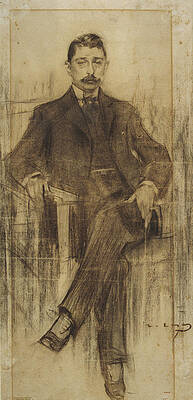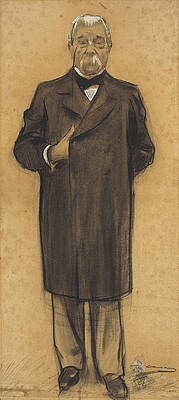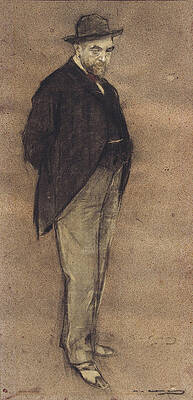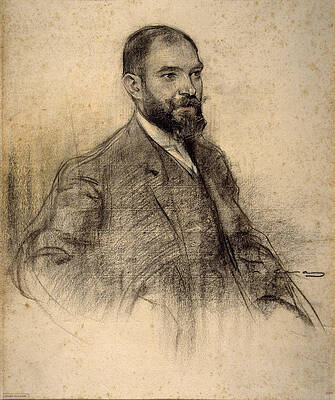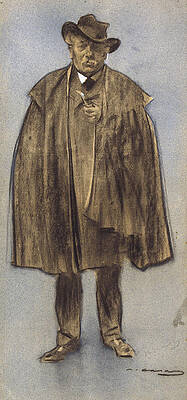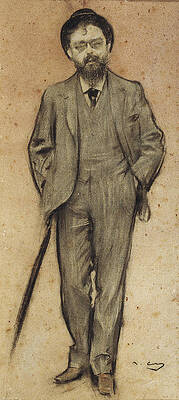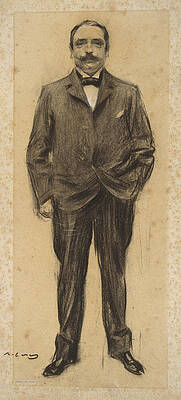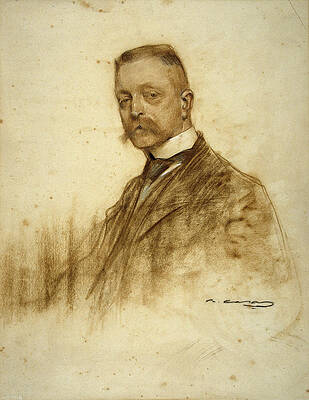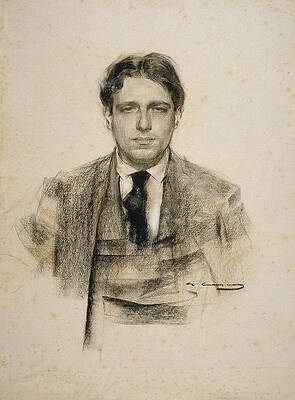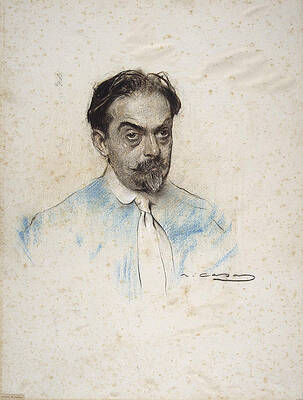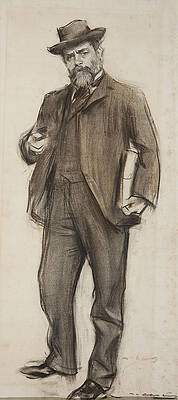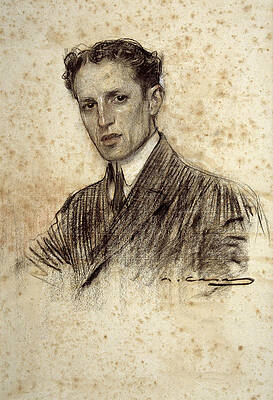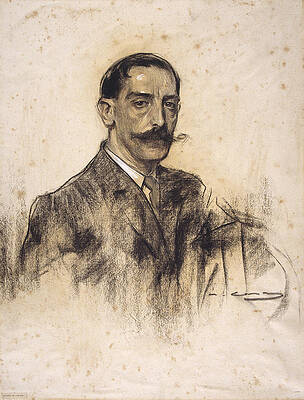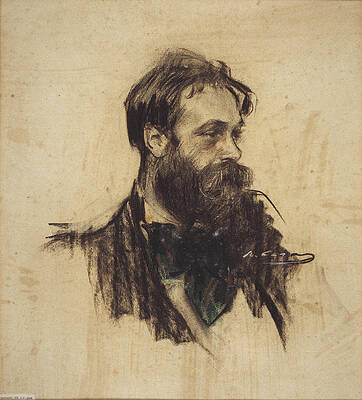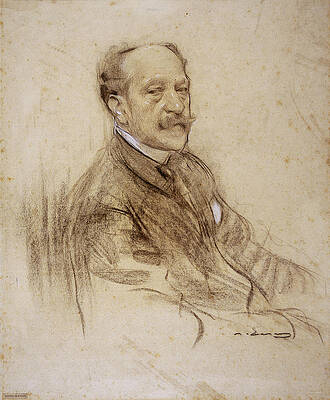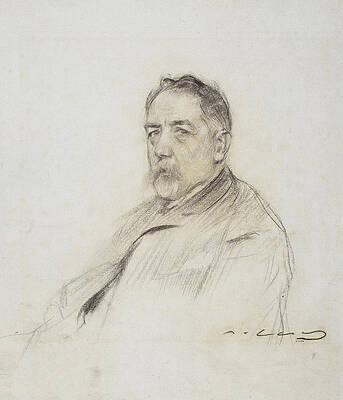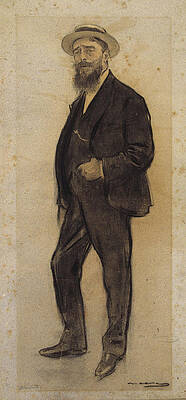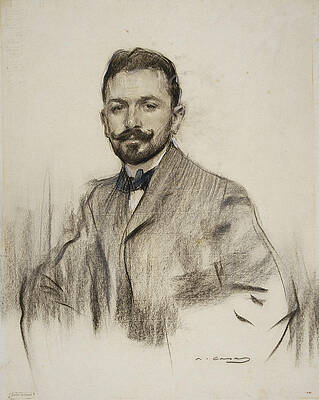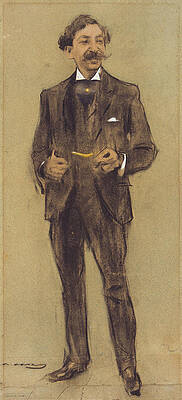Ramon Casas i Carbó
Paintings
Ramon Casas and Pere Romeu on a Tandem
Ramon Casas and Pere Romeu in an Automobile
Study
The Corpus Christi Procession Leaving the Church of Santa Maria del Mar
Moulin de la Galette Interior
Portrait of Salvador Vilaregut
Self-portrait
Julia
Bulls. Dead Horses
Courtyard of the old Barcelona Prison. Courtyard of the lambs
Portrait of a Girl
Self-portrait
The Coach House. La Cochera
Girl with a Blue Scarf
Portrait of Antoni Utrillo
Portrait of Leon Jaussely
Self-portrait of Ramon Casas between Miquel Utrillo and Leandre Galceran
Portrait of Gabrielle Rejane
Portrait of Alexandre de Riquer
Portrait of Josep Pijoan
Portrait of Joaquim Casas i Carbo
Oh. cycling
Portrait of Miquel Llobet
Female figure in profile
Portrait of Lluis Bagaria
Portrait of Pauleta Pamies
Portrait of Pepita Teixidor
Portrait of Charles Cottet
Looking for a subject. Madrid
Self-portrait
Cyclist. Return trip
A woman driver
Woman and Child
Portrait of Pablo Picasso
Portrait of Albert Roquer
Portrait of Amadeu Vives
Portrait of Miquel Utrillo
Portrait of Julia Peraire
Portrait of Benito Perez Galdos
Portrait of Ignacio Zuloaga
Portrait of Agusti Querol
Portrait of Joan Mane i Flaquer
Portrait of Joan Ventosa
Portrait of Lucien Simon
Female bust
Portrait of Albert Rusinol
Portrait of Albrecht de Vriendt
Portrait of Angel Guimera
Portrait of Octave Uzanne
Portrait of Oleguer Junyent
Portrait of Lluis Bagaria
Self-Portrait
Portrait of Manuel Fabra
Portrait of Manuel Feliu de Lemus
Portrait of Eduard Marquina
Portrait of Joan Manen
Portrait of Manuel Duran i Bas
Portrait of Eduard Calvet
Portrait of Dionis Puig
Portrait of Dionis Baixeras
Portrait of Daniel Ortiz
Portrait of Baldomer Galofre
Portrait of Anselmo Fernandez
Portrait of Antoni Ribera
Portrait of Aureliano de Beruete
Portrait of Carles Gumersind Vidiella
Portrait of Eduardo Chicharro
Portrait of Enric Morera
Portrait of Gabriel Alomar
Portrait of Gonzalo Bilbao
Portrait of Guillem de Boladeres
Portrait of Henri Francois Roujon
Portrait of Hermenegild Miralles
Portrait of Jacinto Benavente
Portrait of Jaume Carner
Portrait of Jaume Masso i Torrents
Portrait of Jaume Pahissa
Portrait of Joan Moles
Portrait of Joan Pujal
Portrait of Lluis Millet
Portrait of Manolo Hugue
Portrait of Manuel Bueno
Manuel Duran i Ventosa
Portrait of Lluis Figuerola
Portrait of Carles Pirozzini
Portrait of Bartomeu Amengual
Portrait of Albert de Sicilia Llanas
Portrait of Antoni de Ferrater
Portrait of Bonaventura Bassegoda
Portrait of Enric Borras
Portrait of Enric Granados
Portrait of Frederic Rahola
Portrait of Ignasi Iglesias
Portrait of Ignasi Janer
Portrait of Isaac Albeniz
Portrait of Iscle Soler
Portrait of Jacinto Octavio Picon
Joan Baptista Pares
Portrait of Joan Garriga
Portrait of Joan Gay
Portrait of Luis Morote
Portrait of Antonin Mercie
Portrait of Henry Lerolle
Portrait of Celesti Sadurni
Portrait of Arcadi Mas i Fondevila
Portrait of Emili Sala
Portrait of Enric Serra
Portrait of Jean-Antoine Injalbert
Josep Coll i Britapaja
Portrait of Agapit Vallmitjana
Portrait of Albert Bernis
Portrait of Carles Pirozzini
Portrait of Emile Bertaux
Portrait of Emili Cabot
Portrait of Emili Fernandez
Portrait of Enric Galwey
Portrait of Ermete Zacconi
Portrait of Esteve Sunol
Portrait of Eugeni d'Ors
Portrait of Ezequiel Boixet
Portrait of Jaume Brossa
Portrait of Joan Francesc Chia
Portrait of Joaquim Salvatella
Portrait of Joaquim Sorolla
Josep Clara
Portrait of Josep Codina
Portrait of Josep Llimona
Portrait of Josep Lluis Pellicer
Portrait of Josep Miro
Portrait of Josep Parera
Portrait of Josep Roca i Roca
Portrait of Juan Valera
Portrait of Emili Vilanova
Portrait of Enric Prat de la Riba
Portrait of Felip Rodes
Portrait of Gustave Violet
Portrait of Joaquim Cabot
Portrait of Joaquim Malats
Portrait of Joaquim Mir
Portrait of Joaquin Alvarez Quintero
Portrait of Jose Francos Rodriguez
Portrait of Jose Leon Pagano
Portrait of Jose Martinez Ruiz
Portrait of Jose Villegas
Portrait of Josep M Sert
Portrait of Josep Masriera
Portrait of Josep Pin i Soler
Portrait of Josep Pous i Pages
Portrait of Josep Puig i Cadafalch
Portrait of Josep Reynes
Portrait of Serafin Alvarez Quintero
Portrait of Segundo Matilla
Portrait of Manuel Cusi











Portrait of the violinist Eugene Ysaye








































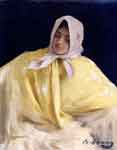
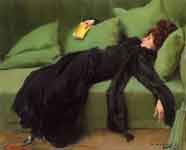
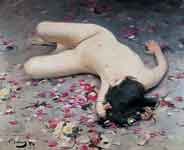
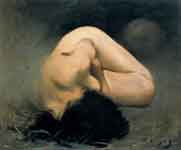
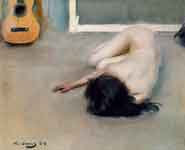
Fine Art Prints | Greeting Cards | Phone Cases | Lifestyle | Face Masks | Men's , Women' Apparel | Home Decor | jigsaw puzzles | Notebooks | Tapestries | ...
Ramon Casas i Carbó (4 January 1866 – 29 February 1932) was a Catalan artist. Living through a turbulent time in the history of his native Barcelona, he was known as a portraitist, sketching and painting the intellectual, economic, and political elite of Barcelona, Paris, Madrid, and beyond; he was also known for his paintings of crowd scenes ranging from the audience at a bullfight to the assembly for an execution to rioters in the Barcelona streets. Also a graphic designer, his posters and postcards helped to define the Catalan art movement known as modernisme.
Barcelona and Paris
Self-portrait as a flamenco dancer, 1883
Casas was born in Barcelona. His father had made a fortune in Matanzas, Cuba; his mother was from a well-off Catalan family. In 1877 he abandoned the regular course of schooling to study art in the studio of Joan Vicens. In 1881, still in his teens, he was a co-founder of the magazine L'Avenç; the 9 October 1881 issue included his sketch of the cloister of Sant Benet in Bages. That same month, accompanied by his cousin Miquel Carbó i Carbó, a medical student, he began his first stay in Paris, where he studied that winter at the Carolus Duran Academy and later at the Gervex Academy, and functioned as a Paris correspondent for L'Avenç. The next year he had a piece exhibited in Barcelona at the Sala Parés, and in 1883 in Paris the Salon des Champs Elysées exhibited his portrait of himself dressed as a flamenco dancer; the piece won him an invitation as a member of the salon of the Societé d'artistes françaises.
The next few years he continued to paint and travel, spending most autumns and winters in Paris and the rest of the year in Spain, mostly in Barcelona but also in Madrid and Granada; his 1886 painting of the crowd at the Madrid bullfighting ring was to be the first of many highly detailed paintings of crowds. That year he survived tuberculosis, and convalesced for the winter in Barcelona. Among the artists he met in this period of his life, and who influenced him, were Laureà Barrau, Santiago Rusiñol, Eugène Carrière, Pierre Puvis de Chavannes, and Ignacio Zuloaga.
Casas and Rusiñol traveled through Catalonia in 1889, and collaborated on a short book Por Cataluña (desde mi carro), with text by Rusiñol and illustrations by Casas. Returning together to Paris, they lived together at the Moulin de la Galette in Montmartre, along with painter and art critic Miquel Utrillo and the sketch artist Ramon Canudas. Rusiñol chronicled these times in as series of articles "Desde el Molino" ("From the Mill") for La Vanguardia; again Casas illustrated. Casas became an associate of the Societé d'artistes françaises, allowing him to exhibit two works annually at their salon without having to pass through jury competition.
With Rusiñol and with sculptor Enric Clarasó he exhibited at Sala Parés in 1890; his work from this period, such as Plen Air and the Bal du Moulin de la Galette lies somewhere between an academic style and that of the French impressionists. The style that would become known as modernisme had not yet fully come together, but the key people were beginning to know one another, and successful Catalan artists were increasingly coming to identify themselves with Barcelona as much as with Paris.
His fame continued to spread through Europe and beyond as he exhibited successfully in Madrid (1892, 1894), Berlin (1891, 1896) and at the World Columbian Exposition in Chicago (1893); meanwhile the bohemian circle that included Casas and Rusiñol began with greater frequency to organize exhibitions of their own in Barcelona and Sitges. With this increasing activity in Catalonia, he settled more in Barcelona, but continued to travel to Paris for the annual Salons.
Els Quatre Gats
The emerging modernista art world gained a center with the opening of Els Quatre Gats, a bar modeled on Le Chat Noir in Paris. Casas largely financed this bar on the ground floor of Casa Martí, a building by Architect Josep Puig i Cadafalch in Montsió Street near the center of Barcelona; it opened in June 1897 and lasted for six years (and was later reconstructed in 1978). His partners in the enterprise were Pere Romeu, who largely played host to the bar, as well as Rusiñol and Miquel Utrillo. The bar hosted tertulias and revolving art exhibits, including one of the first one-man shows by Pablo Picasso; the most prominent piece in its permanent collection was a lighthearted Casas self-portrait, depicting him smoking a pipe while pedaling a tandem bicycle with Romeu as his stoker. The original of the painting—or most of it: nearly a third of the canvas was cut away by an intervening owner—is now in Barcelona's Museu Nacional d'Art de Catalunya (MNAC); a creditable reproduction resides in the revived Els Quatre Gats.
Like Le Chat Noir, Els Quatre Gats attempted its own literary and artistic magazine, to which Casas was a major contributor. That was short-lived, but was soon followed by Pèl & Ploma, which would slightly outlast the bar itself, and Forma (1904–1908), to which Casas also contributed. Pèl & Ploma sponsored several prominent art exhibitions, including Casas' own well-received first solo show (1899 at Sala Parés), which brought together a retrospective of his oil paintings as well as a set of charcoal sketches of contemporary figures prominent in Barcelona's cultural life.
While his painting career continued successfully through this period, as part owner of a bar Casas engaged heavily in graphic design, adopting the art nouveau style that would come to define modernisme. He designed posters for the café, many of which depicted Romeu's gaunt visage. He also executed a series of advertisements for Codorniu, a brand of cava (or, as its ads of the time claimed, champagne) and anisette. Over the next decade, he would design poster ads for everything from cigarette papers to the Enciclopèdia Espasa.
His prominence grows
The Charge or Barcelona 1902
For the 1900 Exposition Universelle (1900) in Paris, the Spanish committee chose two of Casas' full-length oil portraits: an 1891 portrait of Erik Satie[1] and an 1895 portrait of Casas' sister Elisa. His 1894 Garrote Vil —a portrayal of an execution— won a major prize in Munich in 1901; his work was shown not only in the major capitals of Europe, but as far away as Buenos Aires, Argentina. In 1902, twelve of his canvasses were installed permanently in the rotunda of the Cercle de Liceu, the exclusive private club associated with Barcelona's famous opera house.
In 1903 he became a full Societaire of the Salon du Champ de Mars in Paris, which would have allowed him to exhibit there annually, but in fact he only exhibited there for two more years. In 1903, his piece for the salon was one that had originally been called La Carga (The Charge), which he retitled Barcelona 1902 in reference to a recent general strike, although in fact the painting, which shows Guardia Civil routing a crowd, had been executed at least two years before that strike. In 1904, the same piece won first prize at the General Exposition in Madrid.
During a 1904 sojourn in Madrid, he produced a series of sketches of the Madrid intelligentsia, and befriended painters Eliseu Meifrèn and Joaquín Sorolla, as well as Agustí Querol Subirats, official sculptor to the Spanish government. In Querol's studio, he executed an equestrian portrait of the king, Alfonso XIII, which was soon purchased by the American collector Charles Deering, who, over the next few years would commission or purchase several of Casas paintings.
Júlia Peraire
La Sargantaine, c. 1907, portrait of Júlia Peraire
Increasingly in demand as a portraitist, he settled again for a while in Barcelona. Shortly thereafter he made the acquaintance of a young artist's model named Júlia Peraire, 22 years his junior. He first painted her in 1906 when she was 18. She soon became his favorite model and his lover. His family did not approve of her; they eventually married, but not until 1922.
Patronage and stardom
Casas' mother purchased the monastery of Sant Benet de Bages in 1907 and hired Puig i Cadafalch to restore it. Casas would spend much time there, and would repeatedly depict the monastery and its surroundings. Five years later, when his mother died, he inherited the monastery.
Casas portrait of Charles Deering, c. 1914
In 1908 Casas and his now-patron Deering traveled through Catalonia. Deering purchased a former hospital in Sitges to transform it into a sometime residence. Miquel Utrillo dubbed it Marycel. Later that year, Casas began a six-month journey to Cuba and the United States at Deering's invitation. During this time, he executed a dozen oil portraits and over thirty charcoal drawings of Deering's friends and associates.
Returning to Spain in April 1909, he put on a solo shows in both Barcelona and Madrid. At the Fayanç Català gallery in Barcelona, he displayed 200 charcoal sketches, which he then donated to the Museo de Barcelona. His show in Madrid was at the Ministry of Tourism, and featured portraits of the city's leading figures, including the king.
His life continued in this vein for some time. In 1910 executed a painting of the funeral of his friend the art critic and novelist Raimón Casellas, who had committed suicide the previous year shortly after Barcelona's semana trágica and, for Deering, painted a second version of La Carga, this time with the prominent foreground figure of a Guardia Civil on foot rather than on horseback. Over the remaining years before World War I he traveled extensively in Spain and Europe, sometimes alone and sometimes with Deering, visiting Vienna, Budapest, Munich, Paris, the Netherlands, Madrid, and Galicia. He continued to have major exhibits in Spain and France. In 1913 he acquired an architecturally notable home in Barcelona, a tower on Carrer de San Gervasi (now Carrer de les Carolines) in the Sant Gervasi neighborhood; in 1915, he, Rusiñol, and Clarassó exhibited together in the Sala Parés, celebrating the 25th anniversary of their first joint exhibition there.
Tamarit and after
Anti-tuberculosis poster, 1929
In 1916, Casas and Deering traveled to Tamarit in Catalonia. Deering purchased the entire village, and placed Casas in charge of the project of restoring it. Several years later, in 1924, he would return to Tamarit to paint numerous landscapes.
Also in 1916, Deering purchased a house in Sitges, known as Can Xicarrons (now a museum), and the magazine Vell i Nou dedicated an issue to Casas.
Up until this time, Casas had kept his distance from the battles of World War I, but in 1918 he visited the front; he painted a self-portrait wearing a military cape.
Casas, Rusiñol, and Clarasó resumed regular annual joint exhibitions at Sala Parés in 1921; these continued until Rusiñol's death in 1931. However, that year he had a falling out with his friend Utrillo over Maricel Casas's close association with Deering; the breach was never healed.
In 1922, Casas finally married Júlia Peraire, and in 1924 she came along with him on a trip to the United States, during which he once again made portraits of the rich and famous.
By the 1920s, Casas had fallen far away from the avant-gardiste tendencies of his youth. If anything, his work from this period looks like it came from an academic painter of an earlier time than his work of the 1890s. He continued painting landscapes and portraits, as well as anti-tuberculosis posters and the like, but by the time of his death in 1932, shortly after the emergence of the Second Spanish Republic, he was already more a figure of the past than the present.
See also
The Corpus Christi Procession Leaving the Church of Santa Maria del Mar by Ramon Casas
Ramon Casas and Pere Romeu on a Tandem by Ramon Casas
Ramon Casas and Pere Romeu in an Automobile by Ramon Casas
Over My Dead Body (Ramon Casas) by Ramon Casas
References
Avril in Paris at www.artnet.com
Curiosities about Ramón Casas
---
Fine Art Prints | Greeting Cards | Phone Cases | Lifestyle | Face Masks | Men's , Women' Apparel | Home Decor | jigsaw puzzles | Notebooks | Tapestries | ...
---
Artist
A - B - C - D - E - F - G - H - I - J - K - L - M -
N - O - P - Q - R - S - T - U - V - W - X - Y - Z
Retrieved from "http://en.wikipedia.org/"
All text is available under the terms of the GNU Free Documentation License




